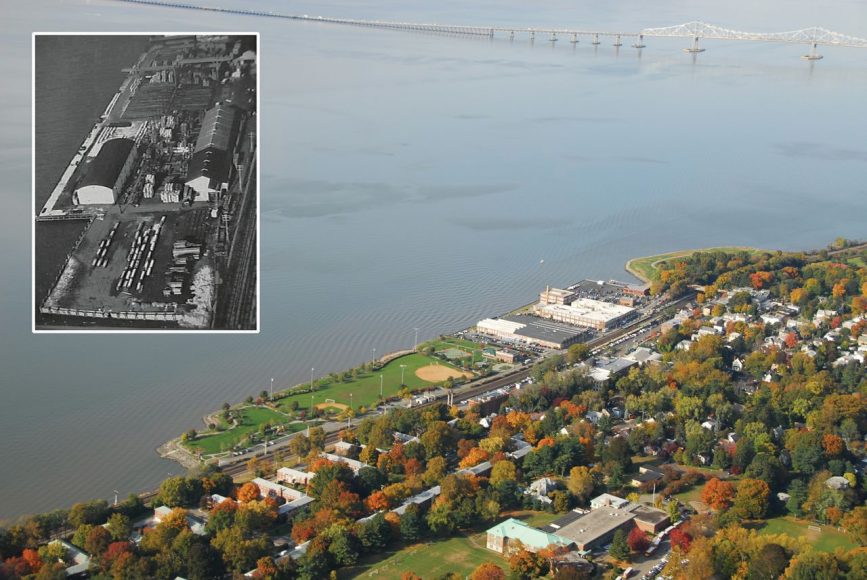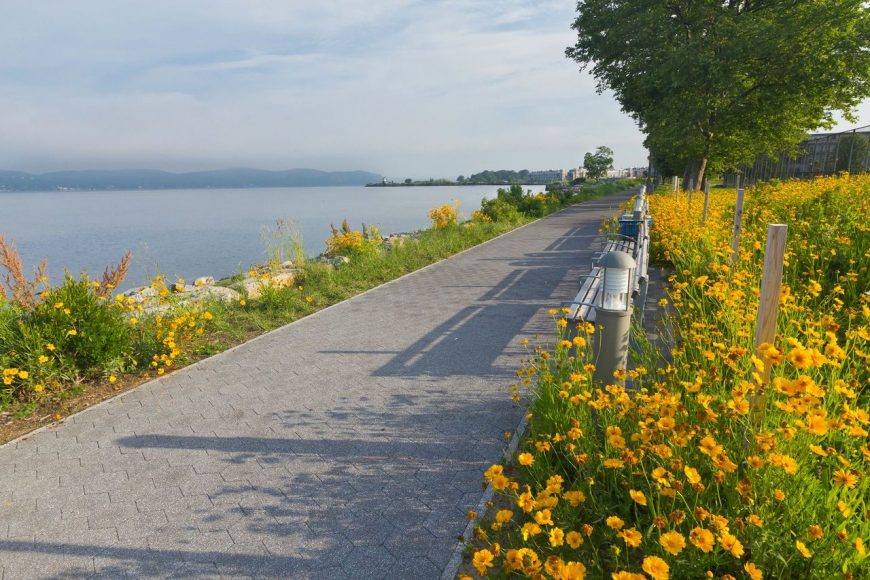The Hudson River of the mid-20th century must have borne little resemblance to the virgin waterway that Henry Hudson first happened upon in 1609 while looking for the Northwest Passage.
The ample, fertile lands that Hudson and the crew of his ship the Half Moon had seen on the riverbanks had been replaced by concrete, steel and smokestacks. The sparkling bay of New York City had become dark and cloudy, with PCBs and other chemicals lurking menacingly under the surface. Its smell was offensive and its tributaries flowed like sewage lines.
In Yonkers, development on the waterfront had blocked the view of the Saw Mill River and construction even buried stretches of the river. Ned Sullivan, now president of the land trust organization Scenic Hudson, was born in Yonkers and remembers those days well.
“It was so polluted, so smelly,” Sullivan says. “Out of sight, out of mind.”
Sullivan’s father, also Ned, was a city councilman and later a Westchester County legislator. The discussions around the dinner table with his father and mother – who still lives in Mount Kisco – usually centered on politics. His parents told him “When the call to public service comes, you say ‘yes.’”
The family moved to Bedford when Sullivan was in the fifth grade and it was in the northern part of Westchester County, which was then rural, that his love of nature blossomed. Later, he pursued environmental studies in the Berkshires, at Williams College, lived overseas and held jobs with the Alaska Department of Fish and Game and the National Park Service. He received postgraduate degrees at the Yale School of Forestry and Yale School of Management.
He ended up at the Bank of Boston, but when the New York State Department of Environmental Conservation came calling, he remembered his parents’ advice about public service. A job as environmental commissioner in Maine followed before he took over the reins at Scenic Hudson 15 years ago, a move that brought him full circle back to the river of his youth.
Four hundred years after being ruled out as the Northwest Passage, the Hudson today is becoming a destination. The return of the river hasn’t come easily and groups such as Scenic Hudson have been fighting for decades to clean up the waterway and reclaim its banks. Sullivan recently went down to the river and saw high school kids on prom night, in gowns and tuxedos, enjoying the waterfront in a way that was impossible a few decades ago.
“It just really, really demonstrated to me that the young people of Yonkers have embraced and cherished that waterfront,” he said. Just before Sullivan came to work for the group, it had successfully lobbied to block the construction of six high-rises on the waterfront that would essentially have blocked access to the riverfront for those who couldn’t afford to buy in one of the buildings.
Scenic Hudson has preserved 31,000 acres since its inception in 1963, turning abandoned industrial properties into riverfront parks and nature-lined walkways. Sites that were polluted with empty industrial oil containers are thriving in Tarrytown, Cortlandt and Peekskill.
The group has taken part in an effort in Yonkers that has helped do two things that would have seemed nearly impossible two decades ago: Prove that south Yonkers had some natural environmental beauty and spark a new downtown that is increasingly a dining and arts district.
That once-stinky Saw Mill is in the process of a multiphase revitalization of the area, which includes exposing the buried sections of the river.
The Hudson and its connected waterways are looking just a bit more like the same river the original Dutch settlers would’ve known or that supported thriving, diverse wildlife.
“For years, I think people thought of the Hudson as polluted,” Sullivan says. “As the river becomes cleaner, I think people have realized the Hudson is an asset more than a dumping ground.”
The environmental cleanups and economic surge go hand-in-hand as a bustling ecosystem directly affects local economic development. For example, in Beacon in the late 20th century, Scenic Hudson worked on projects to clean up the waterway and remediate former junkyards and refineries.
Afterward, the Dia Art Foundation set up shop near the reclaimed waterfront, and art galleries followed Dia into town. Soon, the downtown streets – once polluted in their own way by crime and drugs – were replaced by piquant shops, galleries and artisanal eateries.
“It’s like cleaning up your front yard, making it look great and making it available to the public,” Sullivan says. “You create a point of pride.”
Scenic Hudson has a storied place in environmental actions, formed by six concerned citizens at Carl Carmer’s Octagon House in Westchester. The group opposed a proposed power plant at Storm King Mountain in the Hudson Highlands. A lawsuit followed and the battle raged on for 17 years before Scenic Hudson emerged victorious in its bid to stop the power plant. The case, Scenic Hudson Preservation Conference vs. Federal Power Commission, helped spur the modern environmental movement and set the legal precedent that gave residents standing as an interested party in such cases.
Sullivan has been married nearly 20 years to Tara Sullivan, deputy executive director of the New York State Bridge Authority, which maintains six bridges including the Bear Mountain Bridge and the Walkway Over the Hudson. He has a 17-year old daughter and a 30-year-old stepdaughter and his family encourages him to get out on the Hudson, the river that he has been drawn to since his youth.
His resume has taken him all over the world, but nothing has compared to the beauty of the Hudson.
He says, “To get on a kayak on a sunny day and paddle along the banks of the river is an unsurpassed experience in my life.”
For more on Scenic Hudson, or to become a member, visit scenichudson.org.






